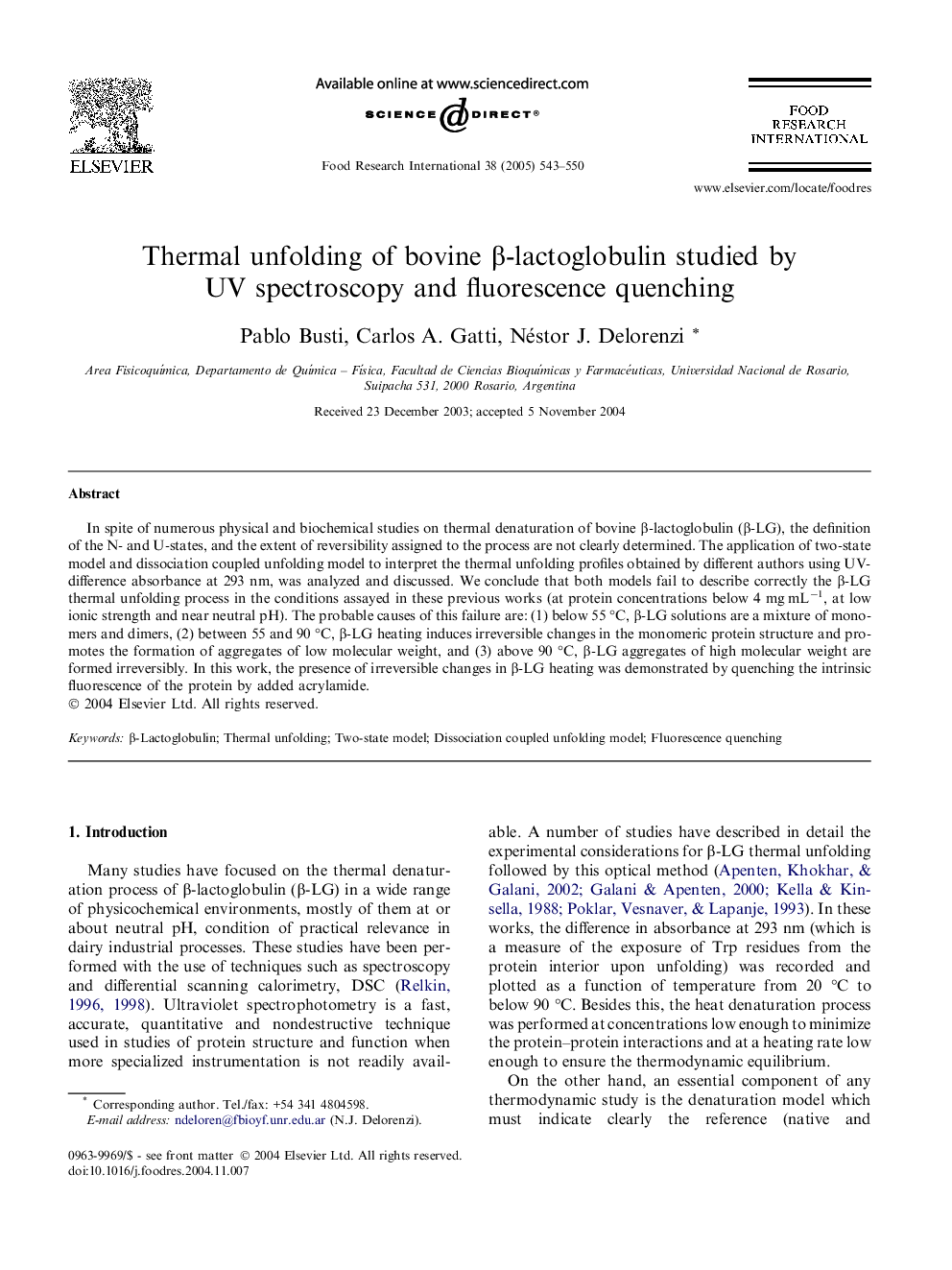| Article ID | Journal | Published Year | Pages | File Type |
|---|---|---|---|---|
| 9487575 | Food Research International | 2005 | 8 Pages |
Abstract
In spite of numerous physical and biochemical studies on thermal denaturation of bovine β-lactoglobulin (β-LG), the definition of the N- and U-states, and the extent of reversibility assigned to the process are not clearly determined. The application of two-state model and dissociation coupled unfolding model to interpret the thermal unfolding profiles obtained by different authors using UV-difference absorbance at 293 nm, was analyzed and discussed. We conclude that both models fail to describe correctly the β-LG thermal unfolding process in the conditions assayed in these previous works (at protein concentrations below 4 mg mLâ1, at low ionic strength and near neutral pH). The probable causes of this failure are: (1) below 55 °C, β-LG solutions are a mixture of monomers and dimers, (2) between 55 and 90 °C, β-LG heating induces irreversible changes in the monomeric protein structure and promotes the formation of aggregates of low molecular weight, and (3) above 90 °C, β-LG aggregates of high molecular weight are formed irreversibly. In this work, the presence of irreversible changes in β-LG heating was demonstrated by quenching the intrinsic fluorescence of the protein by added acrylamide.
Related Topics
Life Sciences
Agricultural and Biological Sciences
Food Science
Authors
Pablo Busti, Carlos A. Gatti, Néstor J. Delorenzi,
